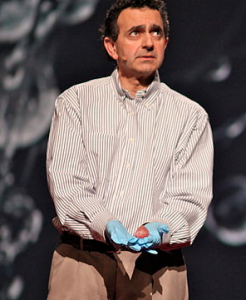Regenerative medicine offers to radically improve patient's lives, while lowering health care costs. New therapies could save $250 billion a year in the US for chronic diseases like renal and heart failure, stroke, diabetes, burn and spinal cord injuries. Watch Anthony Atala, director of the Wake Forest Institute for Regenerative Medicine, explain and demonstrate the field's progess toward designer organs (what's next, a pancreas sponsored by Prada?) in the video panel at right. In this TED presentation, Atala, whose team developed the first lab-grown organ, a bladder implanted into a human, explained his lab's 3-D printing technology, which is already used in many other industries, from auto parts to complex,weight-crucial airplane gear. Using bio-materials and cells, Wake Forest has also managed to engineer miniature kidneys. When tested in animals, these printed structures filtered blood and diluted urine. His goal: to successfully apply the new technology to more transplantable organs. Watch one of his earlier Tedtalks. Atala wrote more about this in the The Huffington Post:
...after having already explored organs such as the kidney and the ear, [our goal] is to use patient data, such as from a CT scan, to create a computer model of the organ to print. Then this model would be used to guide the printer as it prints a layer-by-layer replacement organ made up of cells and the biomaterials to hold the cells together.

The presentation also had a very emotional moment:
For me, the real highlight of the TED experience was a reunion with Luke Masella, one of the first patients to receive a lab-engineered organ--a bladder. Seeing Luke again and hearing about his successes reinforced in my mind the ultimate goal of regenerative medicine: to make patients better.



